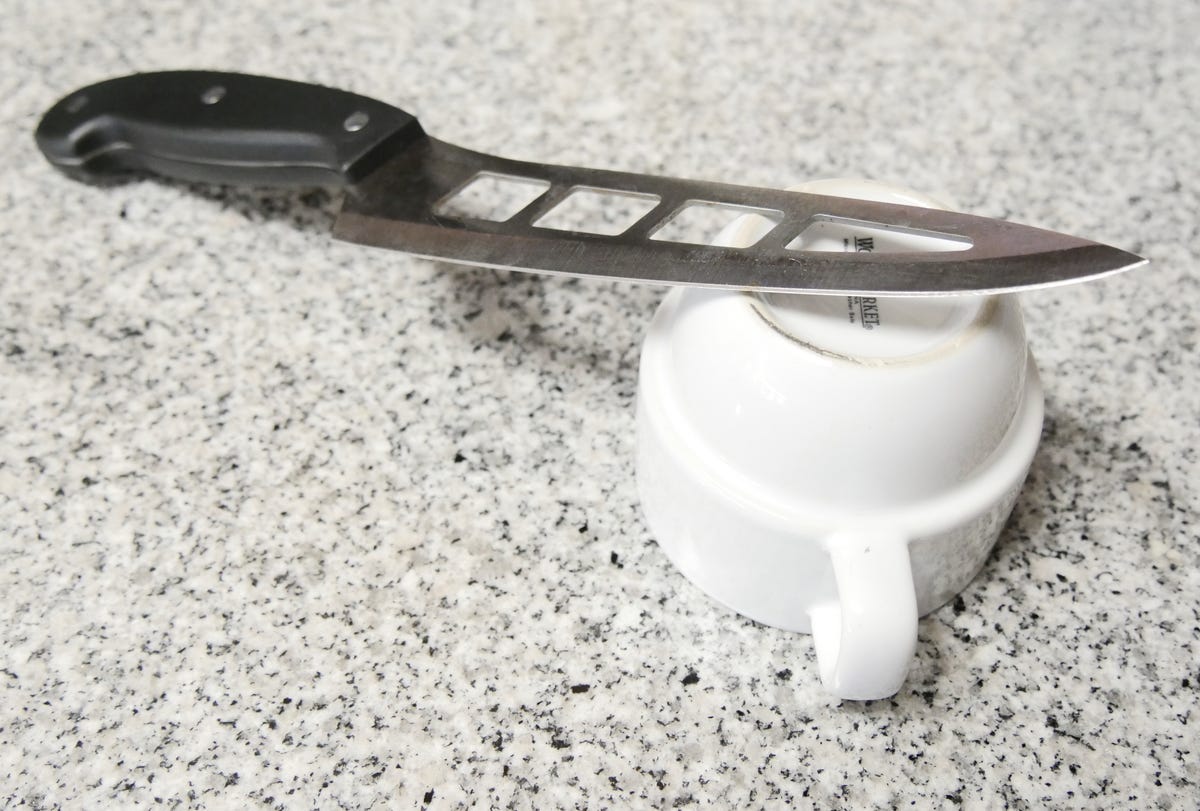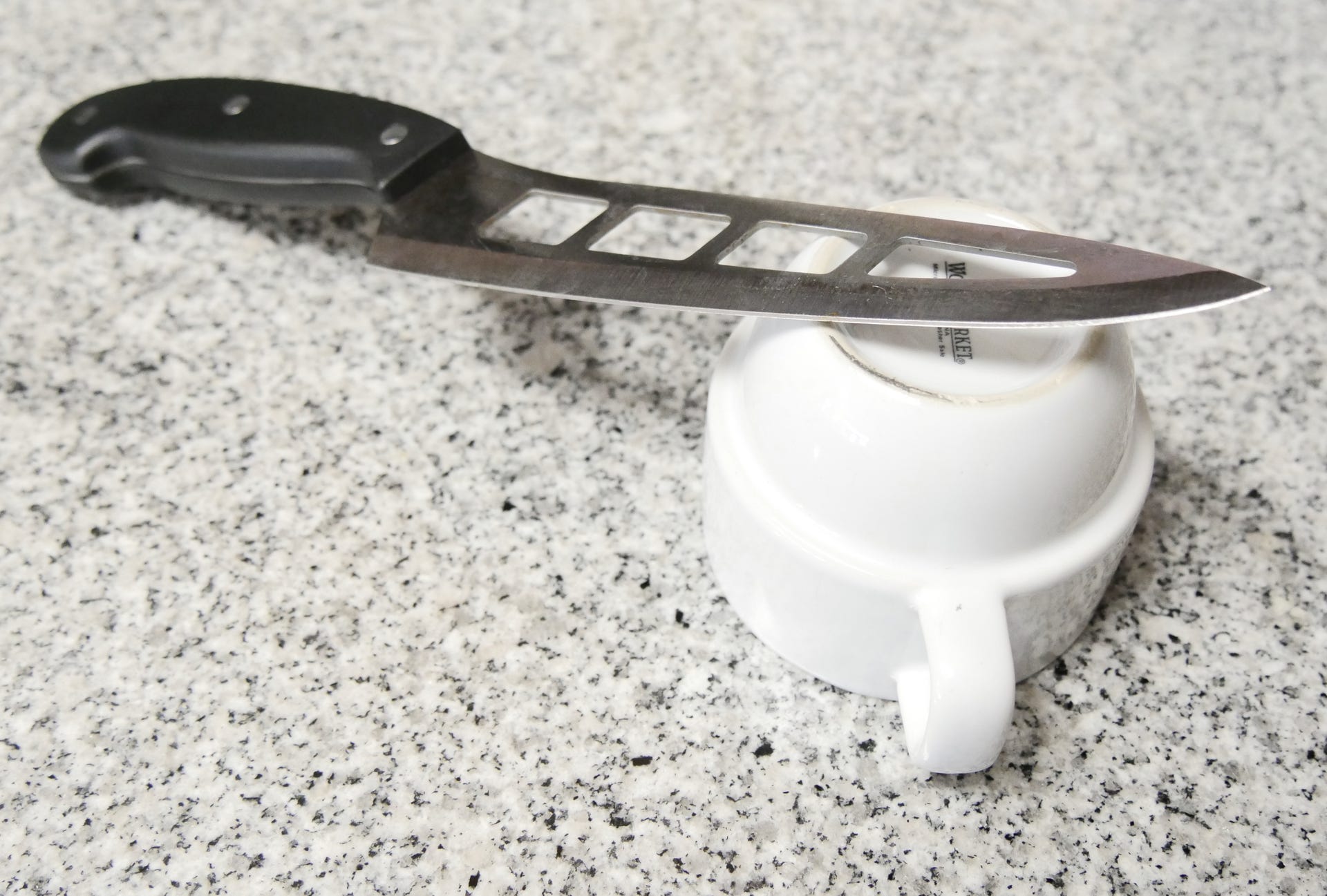A sharp knife is a happy knife and can make a better chef out of you. If you don’t currently own a chef’s knife you love, we’ve tested several to find the best at every price point for 2024. If you have a great blade or solid set of kitchen knives, taking proper care of them is equally important. Keeping your knives sharp and in prime cutting condition means avoiding these bad habits that will ruin your chef’s knife.
You’ll also want to regularly sharpen and hone your blades to keep that edge as sharp as possible without oversharpening, which can permanently damage a blade. Sharpening knives at home may seem like a daunting task, but it’s easy once you develop a bit of technique.
Below you’ll find a step-by-step guide for properly sharpening and honing your best kitchen knives. For more kitchen tips, find out the one trick for cleaning stubborn cookware stains and how to make bacon with no mess to clean up after.
What’s the difference between honing and sharpening knives?
These two terms are often used interchangeably, but they’re different. Honing refers to the act of straightening a blade’s existing edge. Over time, and through ordinary use, the edge of a knife blade will curve over slightly or bend out of its original position.
Honing
When you hone a knife, you coax its pointed surface slightly back into position. It’s a gentle fix but when done often, can prevent more serious blade damage.
The most common way to hone a knife is with a honing steel. These inexpensive tools, starting at around $10, are essentially steel rods with a handle. The surface of the rod is coarse, and scraping a blade across the rod (at the proper angle), on both sides nudges (hones) its edge back in place.
Sharpening
Sharpening is the practice of aggressively polishing a knife to reform its edge. You’ll need to do this for very dull knives only. In the process, bits of metal are actually shaved away. That’s why sharpening a metal blade calls for material harder than steel — stone or ceramic. It’s also why you should hone often, but sharpen rarely.
Sharpening knives with a whetstone is the old school way.
Best ways to sharpen a kitchen knife
Whetstone
To reform the edge of your knife blade, you’ll need a tougher tool. The old-school way is with a whetstone. The good news is whetstones are relatively affordable. You can find them for between $10 and $40.
To properly use a whetstone, place a square of damp paper towel on a flat surface. Rest the whetstone on that, it’ll keep it from sliding. Wet the knife blade with a little water. This lowers friction. Next, place the knife on the stone (its coarsest side), at a 15 to 20-degree angle. The tip of the knife should point away from you. Rest your fingers on the flat of the blade (except your thumb). Your thumb remains on the handle grip.
Drag the knife across the whetstone in a circular motion, making sure to keep the angle constant. Do this three to four times. Flip the knife over and repeat. Next, follow the same procedure but on the whetstone’s smoother side. Your once-dull kitchen knife should now have a sharpened edge.
Electric knife sharpeners
You can use an electric sharpener, too. The process is much the same, with the added benefit of speed. Instead of a whetstone, these products have both honing and sharpening slots. Dragging a knife through the slots accomplishes the same task.
Grinding wheels spin inside the slots, and they’re spring-loaded. That means they should polish knife edges at the correct angle automatically. Be sure to follow the instructions laid out in the manual carefully. Incorrect use of electric sharpeners may damage blade edges. Common mistakes include twisting, pressing downward or pausing the stroke of knives as you pull them through the sharpener slot. This can cause oversharpening (loss of too much metal) or result in an uneven edge.
Expect to pay a little more for a motorized sharpener, for around $40 (like this one on Amazon). The company also sells a line of kitchen knives, under the same EdgeKeeper brand, with sleeves designed to “sharpen” their blades every time you use them. Most likely they’re honing, not sharpening, their knives but it’s helpful nonetheless.

Enlarge Image



